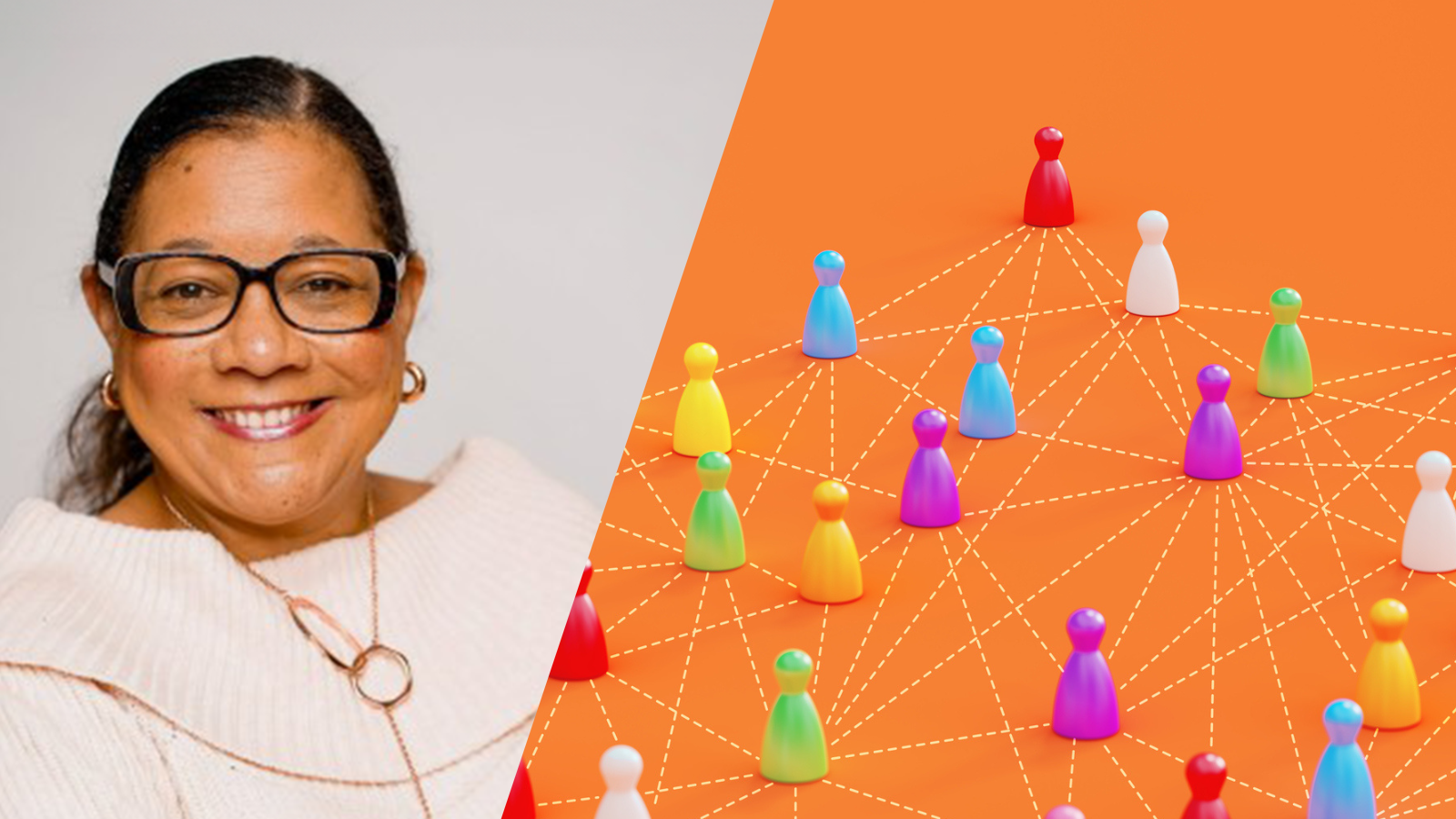Navigating Diversity, Equity, and Inclusion: Insights and Strategies for Advancing DEI Agendas with MLT’s Tina Gilbert

Management Leadership for Tomorrow (MLT) recently hosted an executive roundtable, where industry leaders engaged in discussions on proactive strategies for advancing Diversity, Equity, and Inclusion (DEI) agendas during challenging times. Tina Gilbert, MLT’s Chief Advisory Officer and Vice President of Employer Offerings, led key discussions on topics such as navigating DEI backlash, combating resistance, and fostering effective leadership practices. Through in-depth and transparent conversations, the event offered valuable insights for organizations, Chief Diversity Officers (CDOs), Human Capital and Diversity Leaders seeking to elevate their DEI standards.
Tina shared more MLT insights, strategies and perspectives during a post-event interview. Let’s explore her expertise, uncovering key takeaways, dispelling myths, and driving meaningful impact in the workplace.
Understanding the Cyclical Nature of DEI Backlash
When it comes to progress in diversity, equity, and inclusion, there have been noticeable cycles of backlash. In our recent conversation, Tina emphasizes the value of DEI in dismantling limiting systems and advocating for the advancement and achievement of all individuals. She weighs in on the historical context of DEI backlash and the recurring pattern of progress met with barriers throughout American history.
Tina’s Insight
“Throughout American history, significant progress has often been met with barriers and resistance. From the mid-1800s Reconstruction era to the Jim Crow era and the Civil Rights Movement, policies have been implemented to suppress racial equality gains. Today, following the Spring 2020 racial reckoning, we face organized attacks on DEI values, reinforcing the importance of diversity, equity, and inclusion to dismantle limiting systems and ensure achievement for all.”
Strategies for Overcoming Anti-DEI Activism
Anti-DEI efforts and activism are often primary contributors to progress in DEI. Tina sheds light on the tactics used by anti-DEI activists, such as leveraging “Reverse Discrimination” and spreading false narratives to create division. She stresses the importance of factual narratives, effective communication, and strategic responses to counter anti-DEI messaging.
Tina’s Perspective
“Anti-DEI activists often highlight ‘Reverse Discrimination’ as a reason for resistance. This term implies discrimination in one direction, when truthfully, any form of discrimination is wrong. The other tactic used is muddying public debates to sow divisions, especially in today’s highly politicized environment. This tactic creates negative narratives about DEI, which can activate content creators who spread anti-DEI messaging on social media. It’s important to counter negative DEI narratives with facts and strategic communication.”
Dispelling DEI Myths and Misconceptions
Specific language and terminology anti-DEI activists use can be saturated with myths and misinformation. Tina addresses those common misperceptions surrounding DEI initiatives, debunking prevalent myths and providing realities to correct misconceptions. From clarifying the legality of DEI efforts to highlighting the benefits of inclusive workplace policies, she offers clarity to misconceptions hindering progress.
Tina’s Clarification
“There are three myths about DEI. Here are the realities.
MYTH #1: DEI is Illegal.
REALITY: Activists have challenged specific activities, but the majority of DEI initiatives are legally sound. DEI efforts help ensure compliance with the law by preventing discrimination in various practices.
MYTH #2: DEI hires unqualified candidates of color.
REALITY: DEI aims to level the playing field, offering equal opportunities for success. It helps organizations identify and advance talent from diverse backgrounds.
MYTH #3: DEI benefits only certain groups.
REALITY: DEI benefits everyone by fostering equitable and inclusive workplaces. Resolving issues for the most disenfranchised groups leads to positive outcomes for all.”
Conversations and Communication in DEI Efforts
Effective communication and conversations about diversity, equity, and inclusion are essential to fostering inclusive workplaces. Tina emphasizes the importance of aligning conversations with organizational values and goals to create meritocratic and effective organizations where everyone can thrive. By involving a diverse group of leaders in DEI discussions and utilizing storytelling to convey the impact of DEI initiatives, organizations can advance their DEI efforts and drive meaningful change.
Tina’s Strategy and Recommendations
“The first step in approaching conversations about diversity, equity, and inclusion within organizations is to align with the values and goals of the organization. Also, ensure the issues are properly contextualized: at its core, DEI strategies are intended to create more meritocratic and effective organizations where everyone has the opportunity to thrive. Avoid delving into hypotheticals or anecdotes from other organizations; focus on your organization’s goals and actions.
Another effective strategy in DEI efforts is to involve a variety of leaders beyond just the CDO or CHRO. Engage leaders from different business functions such as the CEO, CFO, Head of Operations, Marketing, and Sales to communicate how DEI initiatives benefit all employees and contribute to the organization’s overall goals. Additionally, storytelling plays a key role in sharing the value proposition of DEI and countering negative narratives. Leaders should share impactful stories that demonstrate changes in behaviors, skill enhancement, or different perspectives brought about by DEI initiatives.”
The Value of Understanding Different Perspectives
In navigating new initiatives, understanding and engaging with employees who hold varying viewpoints on DEI can help organizations move towards a more inclusive workplace culture. Tina provides insights on how Chief Diversity Officers can effectively engage with employees across these segments to address questions, dispel misconceptions, and drive meaningful change in organizations.
Tina’s Insights and Approach
“According to the Pew Research Institute, employees’ viewpoints on DEI can be categorized into three main segments: “Strong Equity Advocates” (15% of employees), “Support DEI But Have Questions” (56%), and “Staunch Equity Opponents” (16%). For Strong Equity Advocates, it is recommended that CDOs and their Communication Teams provide them with talking points and fact sheets to serve as a reference guide. By empowering them with information, they can effectively spread messaging and influence the middle segment.
The focus should then shift to the largest segment, those who Support DEI But Have Questions, where efforts should be made to address and correct any misconceptions stemming from anti-DEI messaging. Engaging organizational leaders to lead discussions and forums can be beneficial in this regard. When it comes to Middle Managers, a shift away from mandatory DEI overview training towards emphasizing DEI value messaging, such as its alignment with business objectives, and enhancing understanding of underrepresented employee experiences, can be more effective.
Lastly, when dealing with Staunch Equity Opponents, it is important to understand their perspectives to tailor messaging that aligns with DEI business goals. The objective should be to influence their behavior through job expectations rather than attempting to change their stance on the DEI value proposition, focusing on aligning behaviors with outcomes.”
Going Above and Beyond to Drive Change and Create Inclusive Environments
Reflecting on resources, solutions and contributions, Tina shares her and MLT’s dedication to defining DEI strategies, providing expertise, and establishing standards for measuring racial equity. Initiatives like the Racial Equity at Work Program empower organizations to drive meaningful change and foster inclusive workplaces.
Tina’s Leadership Commitment
“MLT helps define DEI strategies, dispel myths, provide insights, and ensure strategic rigor for organizations to extract the value of DEI. Our Racial Equity at Work Program sets criteria and metrics for racial equity, guiding companies to make impactful changes in the right areas. Finally, we offer a host of solutions that employers can leverage to support their hiring, retention, and advancement goals through a variety of MLT interventions and programming.”
MLT’s insights offer a roadmap for organizations and leaders aiming to enhance their DEI efforts and create inclusive workplaces. Through dispelling myths, addressing resistance, and driving meaningful change, Tina and MLT pave the way for a diverse, equitable, and inclusive future in the workplace.
Stay tuned for more expert insights and opportunities to elevate your organization’s DEI strategy and journey with MLT.



